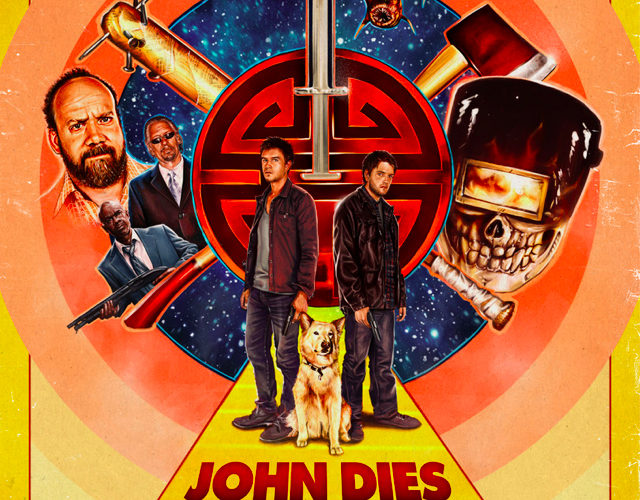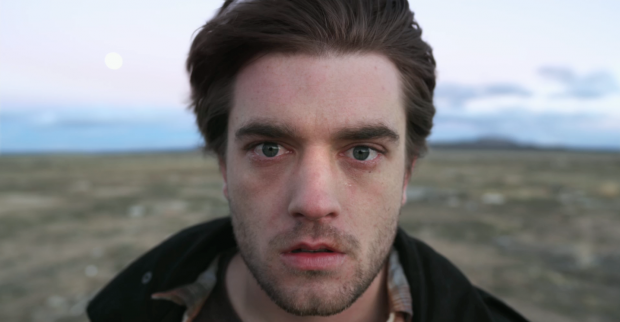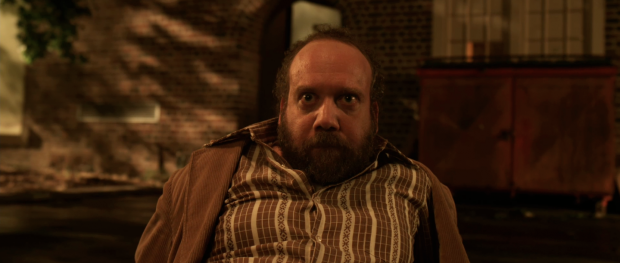I acquired a throbbing headache at around the halfway point of John Dies at the End, and by the time the film’s cheeky closing credits started to roll, it was still there, pounding away like a ticked-off bass drummer. There is definitely an audience out there for this movie — it’ll be especially appealing, I imagine, for those familiar with the work of bonkers writer-director Don Coscarelli (Bubba Ho-Tep, Phantasm) — but I found its erratic blend of horror, comedy, and fantasy fairly grating from the get-go. It’s unfortunate, too, because there are a handful of scenes that are well-staged in a hallucinogenic way, but any potential pleasures were, for me, drowned out by the utter lack of overall discipline.
Even from a tonal standpoint, the film is a cluttered mess — I’m not even sure, for one thing, that it consistently qualifies as a horror-comedy, since I so rarely detected a substantial sense of humor from Coscarelli. Obviously a film containing everything from sculpted-penis doorknobs to moustaches that turn into bird-like flying objects isn’t meant to be treated with a straight point-of-view, but I think more than just the mere sight of these objects is needed for an overall comedic context to be developed. Is the image, for example, of a body dissolving into a series of colorful snakes funny on its own terms? Or is the sudden presence of serpents more frightening than anything else? From where I’m sitting, it’s really neither, which is why the film could’ve benefitted from a more coherent overarching attitude.
What the arrival of the snakes has going for it, though, is the fact it appears early in the film — mystifying though it may be, there’s the lingering hope that it will be better explained in subsequent scenes. And the film’s framing device does essentially make that promise — by putting David Wong (Chase Williamson) and journalist Arnie Blondestone (Paul Giamatti) together at a Chinese-restaruant sit-down, Coscarelli gives us the sense that the flashbacks to come will be boosted by an informed narrator, someone (in this case, David) who will be able to relay to the audience some sort of an intelligent explanation or interpretation of the events of their story. But I didn’t quite get that here — or, if I did (the film’s confusing), it certainly wasn’t satisfying.
I haven’t read the film’s source material — a novel of the same name written Jason Pargin, who uses David Wong as a pseudonym — but the basic premise of Coscarelli’s film is that David and his friend John Cheese (Rob Mayes) have stumbled upon a peculiar black tar-like drug that unleashes a whirlpool of reality-warping effects: bug-filled hallucinations, communication with the dead, and the blurring of the boundaries between body and mind. Dubbed “Soy Sauce” on the street, the drug is said to have consequences that can last a lifetime, and this is but one example of the many statements from David that Arnie Blondestone greets with a healthy dose of skepticism.
From there, though, the film begins to devote more and more of its energy to special-effects antics, dodging some of the entertainment value of the film’s wackiest conversations (which are the moments I like best). There is an amusing anecdote, to provide one example, where an in-over-his-head detective (Glynn Turman) spends far too much time drawing parallels between his vision of hell and country-music radio stations. I even like the line where a frantic Dave calls a local priest (Angus Scrimm) asking for advice on “demonism,” but it takes all of two or three seconds for Coscarelli to turn the priest himself into yet another fire-breathing monster. And the film doesn’t even take full advantage of what is perhaps its most obvious joke — that David Wong is a white guy in a Chinese restaurant.
Even when the film is at its most grotesque — when eyeballs start exploding and dogs start driving pick-up trucks — it feels less like an intelligently self-conscious thing than an irrational freak-show, clamoring for cult-hit status as obviously as so many late-year releases clamor for the prestige of the Oscar-contender label. The film is so desperate to satisfy its niche audience that it throws in an assault of out-of-nowhere references — naked females that quote Kubrick’s Eyes Wide Shut, or random name-droppings of people like Franz Kafka — without quite knowing what to do with them. At its worst, John Dies at the End exists in this weird tonal no-man’s-land, not humorous and not scary — like a poor man’s attempt at David Lynch, but with more insects.
And the involvement of Giamatti, I think, was a major misstep, considering how relatively new the rest of the young cast is. Here’s a guy who’s simply one of my favorite working actors, and he’s relegated in the film to a rather thankless supporting role that loses more and more touch and relevance as the film goes along. But his line-readings, as always, are punchy and priceless — his panicked delivery of “What the shit is that?” is particularly memorable. But he’s generally sidelined in favor of the other elements, and while it’d be outright silly to argue that the acting has anything to do with why the film bothered me, the main drivers of the story — performers like Mayes and Williamson, who are both still getting their acting feet wet — are inevitably facing an uphill battle with when we know there’s an off-screen Giamatti somewhere. A tip for casting directors: Don’t peg Giamatti for a subpar role, and then give the real stuff to a bunch of unknowns.
John Dies at the End is currently available on VOD and it will hit limited release on January 25th.



